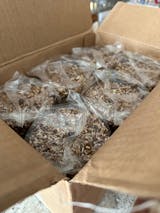March 14 is: Learn About Butterflies Day!
No matter how hard winter tries to hold on for, like, EVER (I’m sure I speak for everyone when I say, grrrrr to that!!), spring is peeking out here and there. And what more beautiful symbol of spring than butterflies?!
Attracting butterflies to your yard or garden is not too difficult, according to the National Wildlife Federation. A good way to start is to offer host plants (where butterflies will lay their eggs and caterpillars will eat and grow) and nectar plants (where butterflies will feed). Your butterfly garden can be as large (filling up your entire yard) or as small (filling up a planter box on your windowsill) as you like. Popular host plants include carrot, dill, fennel, and parsley for Eastern Black Swallowtails and milkweed for Monarchs. Red, yellow, orange, pink, and purple tubular nectar flowers will attract the most butterflies. Popular varieties include Wild Columbine, Rose Verbena, Swamp Milkweed, Butterfly Weed, Coneflowers, and Cardinal Flowers. Consider placing nectar flowers where they will have full sun from mid-morning to mid-afternoon. Also consider staggering your planting so that as one plant stops blooming another will start.
Butterfly feeders can help supplement a smaller butterfly garden. The nectar used is similar to that used for hummingbirds, except that it is extremely watered down (anywhere from 10 parts water/1 part sugar to 20 parts water/1part sugar). Butterflies also enjoy overripe fruit sections as well.
Butterfly houses provide excellent temporary shelter from storms and predators when placed adjacent to your garden. However, it is important to keep in mind that many species will not choose to “live” in the houses very long.




